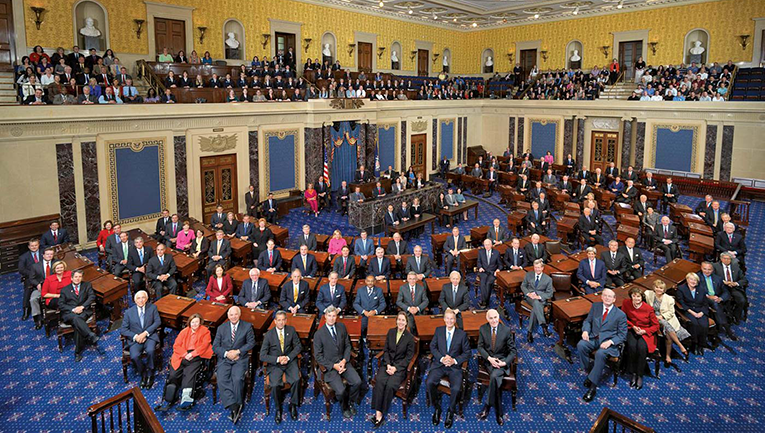Last night, the Senate passed its bill to reform the Toxic Substances Control Act (TSCA). This is a milestone that we have worked toward for years, but it also comes with some big red flags.
The version that passed is much improved over the introduced version of S.697, the Udall-Vitter bill. It contains some important reforms:
- It removes the major legal barriers that prevented EPA from assessing chemicals and imposing restrictions where needed.
- It reduces the abuse of “Confidential Business Information,” which hides chemical information from the public.
- It sets up a weak but enforceable schedule of EPA chemical reviews.
- It preserves existing state restrictions on chemical use.
- Compared to previous versions, it makes it more likely that especially hazardous chemicals are reviewed earlier than later.
- It lets EPA order companies to test a chemical, instead of having to go through a formal rulemaking, which is a very cumbersome process.
- It provides EPA with a fee from industry to help fund its work.
- It provides clear “grandfathering” (legal protection) of many existing state laws.
Unfortunately, it contains several provisions for the chemical industry and some other interest groups that undermine these limited reforms:
- It makes it harder for EPA to follow through and intercept a dangerous chemical when it enters the country as part of an imported product. Since so many products are imported, that’s a big deal.
- It requires EPA to jump through new legal hoops before it can order a chemical company to test a chemical. In that sense, it has reduced one barrier, but created some new ones.
- It still requires EPA to set aside a certain number of chemicals as “low priority” without a full safety review. The industry will flock to that provision so they can use it to convince retailers, states, and trading partners who are currently taking action against chemicals that a particular chemical really isn’t a problem, even though it hasn’t been held to the safety standard.
- It blocks states from taking new action on a chemical while EPA conducts its assessment, potentially delaying needed health interventions for years.
- It has a lot of other busy work and smaller provisions that are there for various industry groups, which will waste precious time and resources at EPA and reduce what is available for the core tasks of testing, evaluating and restricting toxic chemicals.
Our press statement on the passage of the bill last night emphasized the negative aspects of the bill for two reasons:
- The Senate bill has been accompanied by a full propaganda push by the industry and its allies, requiring some rebalancing and perspective on our part.
- Recently, and more troubling: in the run-up to this vote, we saw strong indications that the chemical industry’s playbook for the upcoming conference process will be to walk back the few key wins for public health and the environment, including walking away from a strictly health-based standard and an enforceable schedule of reviews.
The next phase of the process will therefore be most crucial. As we’ve said before, the strength of the House bill is that it acknowledges that it is a limited reform and it focuses on the fundamentals. The House bill simply removes the key pieces of TSCA that had prevented EPA from testing, evaluating, and restricting chemicals where needed. It also asks for expedited action on chemicals that are persistent, bioaccumulative, and toxic. Like the Senate bill, it defines vulnerable populations and requires that they are protected. It has an important principle that nothing changes for the states unless and until EPA actually exonerates a chemical after a full safety review or restricts it to ensure safety.
The House bill still falls short by not providing new resources for EPA, making inadequate reforms to confidential business information, and not having clearer grandfathering of certain key state laws.
To combine the best of both bills would be to work off of the House bill and address these shortcomings, by pulling selectively from the Senate bill.
If the conference committee does that, we could end up with TSCA reform that is more limited than we had hoped for, but still meaningful in the protection it steadily provides.
“Ten chemicals per year” sounds like a small number but one chemical or class of chemicals can have an enormous reach in the economy and impact on our health. If EPA tackles some of the worst first, and truly protects disproportionately exposed populations, like environmental justice communities or factory workers, it would make a big difference to actual people. Ditto for the PBT provisions.
The most important part of the process comes next and the stakes are still very high for public health and the environment. Stay tuned.




